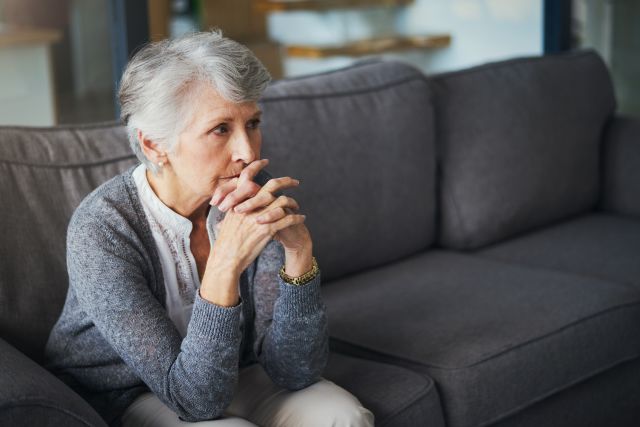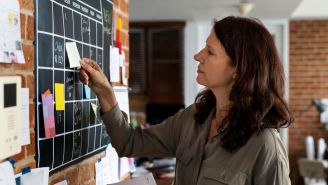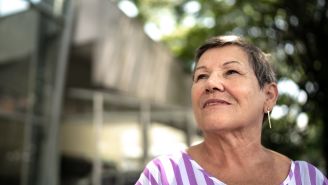Updated on August 13, 2020.
Before March 2020, Tamara Bullock, owner of the small, independent Bullock Funeral Services in New York City, would oversee a handful of funerals each month. In the first few months of the COVID-19 pandemic, however, she served more than 20 families per month. She did her best to help families grieve for the loved ones they lost—but restrictions made it a challenge at every turn.
“Some funeral homes were not allowing viewings, so family members couldn’t see their loved one,” Bullock explains. “How do you tell the family of someone who had seven children and helped raised her grandchildren to choose which 10 people can come to the homegoing service?”
Bullock points out that many of her clients were not working because of the pandemic, making it even more stressful and difficult to plan the type of memorial service they knew their father, grandmother, sister or child deserved.
Unable to say goodbye
Death is a natural part of life, but unresolved grieving during COVID-19 has become an epidemic of its own for families across the globe. Strict “no visitors” policies in hospitals and limits on the number of people allowed to gather in one place have made it nearly impossible to hold the traditional rituals of mourning, such as funerals, wakes and shivas.
The reverberations are immense: For every American life lost to COVID-19, there are approximately nine close family members grieving (including grandparents, parents, siblings, a spouse or children), according to a July 2020 study in PNAS. If you multiply that by the more than 165,000 deaths as of August 12, 2020, that equals roughly 1.5 million grieving Americans.
Hidden health toll
Not only could the loss of a loved one bring emotional trauma and increase the risk of depression and anxiety, but it can also affect your physical health.
Research has shown that bereavement may lead to worse heart health and greater risk of death. There is even a medical condition known as “broken heart syndrome,” in which someone who has experienced extreme distress resulting from profound loss experiences symptoms similar to a heart attack.
The sudden and unexpected death of a loved one—which has tragically been all-to-common during the pandemic—is also associated with an increased risk of mental health issues, such as PTSD, depression and panic disorders.
“The challenges of COVID are far-reaching,” says Melissa Flint, PsyD, a grief counselor and associate professor of clinical psychology at Midwestern University in Glendale, Arizona.
“Families may not have been able to be with the person who was dying,” says Flint. “And for some people, spending time with the body after the time of death has been a critical stage for them to process the reality of the loss—and that may have been removed as well.”
Need for closure and support
Funerals and other religious rites surrounding death were created to help the living acknowledge the reality of the loss, Flint explains. “It provides a time for us to share in grief, but also share memories of our loved one,” she says.
The social connection among survivors is a driving force behind these gatherings, Bullock adds. “A funeral is when people gather from near and far, cousins you’ve never seen before or haven’t seen in years,” she says. “It’s like a family reunion. We all say we should get together at another time, but then we never do.”
For many mourners, standing close as the casket is placed in the ground is an important emotional moment. “For people who lost a loved one but can’t go to the gravesite, they don’t get to have closure,” says Bullock. “Not being able to escort them to their final resting place goes against everything they believe.”
But as we have all learned since the start of the pandemic, we can find new ways to experience age-old rituals:
Gather together virtually. “While we might not be able to join together for ceremony in ways we have done in the past, ceremony is no less important in this time of COVID,” says Flint. She recommends sharing photos of the deceased, plus their favorite music and poems that help express your feelings over Zoom or other video conferencing platforms. You can also conduct a small, personal service with your immediate family, such as lighting candles together, or reading prayers together in your yard.
Bullock livestreamed the services she led, which, at the height of the pandemic, were limited to just 10 guests. “The webcast was the saving grace, allowing the rest of the family and friends to participate in the homegoing service,” she recalls. “Guests were able to post comments, and families could read that later, like a register book.”
She believes live-streaming funerals will continue even after the pandemic, since it allows mourners who are elderly or live far away to participate.
Space it out. Depending on your location, you may be able to only have immediate family at the gravesite, or you can invite guests—as long as they maintain social distance and spread throughout the property.
“Family and close friends were able to participate in the graveside service for a friend of mine who recently died,” Flint points out. “It was by invitation only, and we received orders as to where we were to park and stand. While the grouping would usually cluster around the burial site, as I looked around me, I saw an entire community surrounding this family. Everywhere the eye could see was a representation of our love for them and they knew we were there, even though we were physically distanced.”
If only a small group can attend, Flint suggests you plan to have a graveside gathering later on, when restrictions lift: on the anniversary of the death, on the loved one’s birthday, or on a favorite holiday.
Express condolences verbally. “To move through grief, we must have connection and empathy,” says Flint, who points out that one of the biggest challenges of mourning in the days of social distancing is forgoing physical touch. “We know that in times of uncertainty, and especially after a loss, grieving people who are touched—given hugs, holding hands—report feeling both comforted and supported,” she says.
While you can’t offer hugs or your hand, you can support loved ones with your words. Connection doesn’t necessarily have to be through a hug or handshake. “You are the expert in your grief,” says Flint. If you’ve lost someone, “tell people what you want and need—don’t rely on them to mindread,” she adds.
When your friends call you or send a card asking what they can do to help, respond to them honestly, whether that means just listening to you talk about how wonderful your sibling was, or perhaps helping you plant trees or flowers in your grandparent’s honor.
If your friend has lost someone, make a connection by picking up the phone and calling (rather than texting or commenting on Facebook), and writing a heartfelt letter rather than simply signing a pre-printed condolence card, Flint suggests.
“Can you do acts of service that represent that person and things they supported?” she asks. “Can you mow the lawn, run some errands, cook a meal? There are so many ways to show that we care.”
One thing to remember is that even when we are allowed the full ritual of grieving, it takes time, says Flint. “It is important to remember that closure rarely happens within the short weeks following a death when typical religious and cultural events occur,” she says. “Closure occurs over time, often years, as we integrate that we have lost a great love, yet that love remains in us.”






